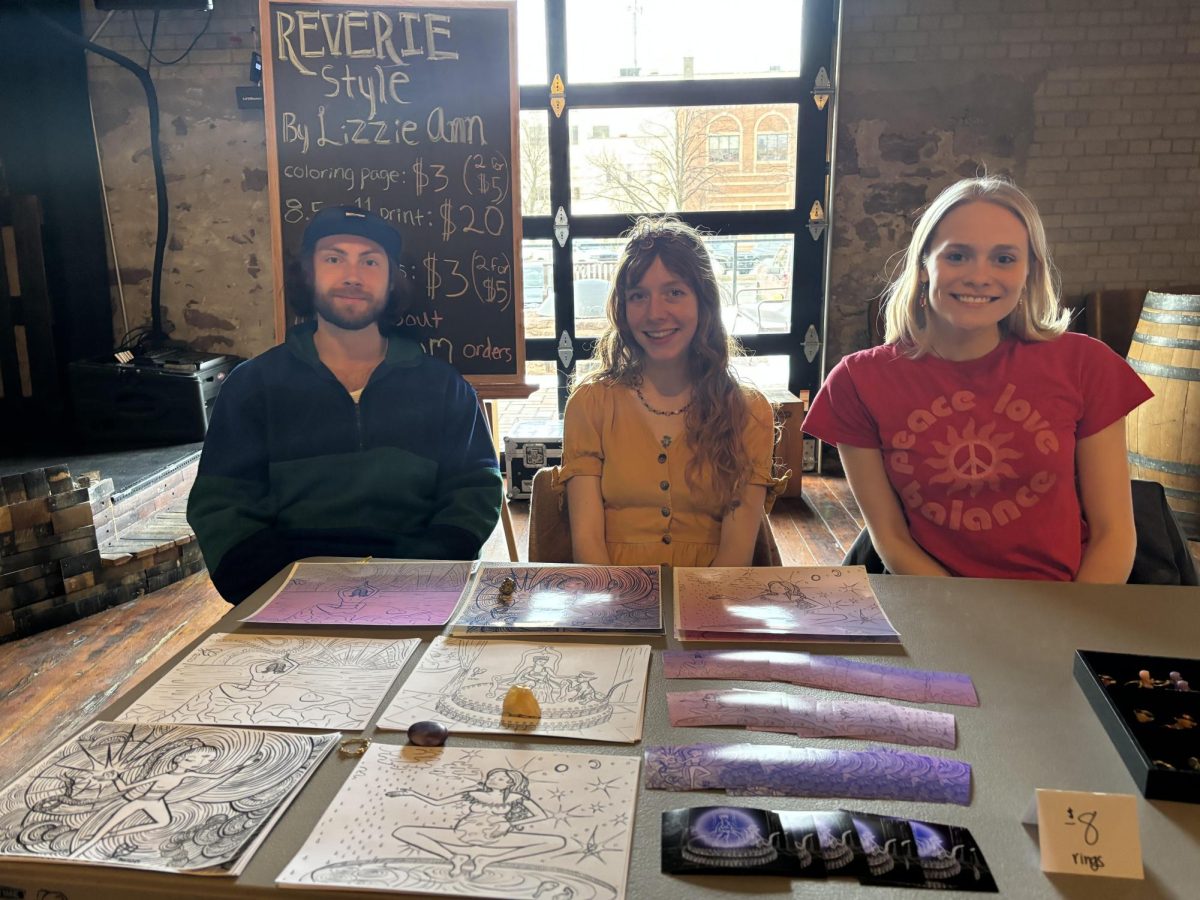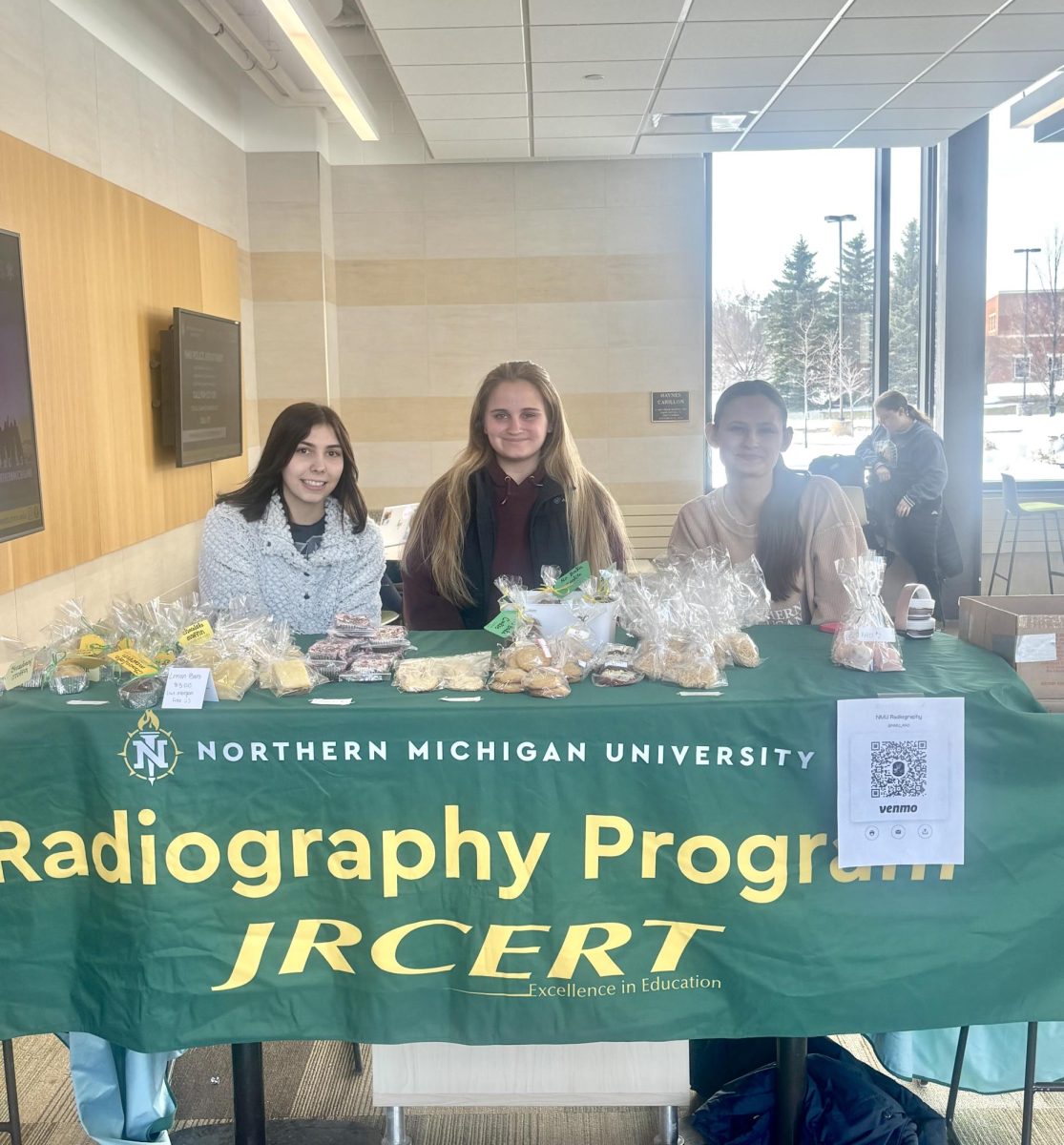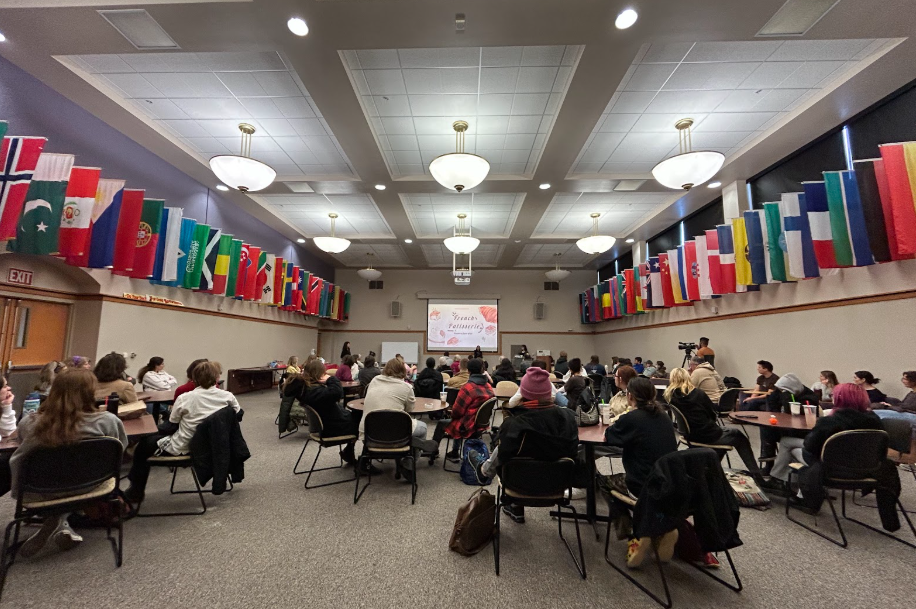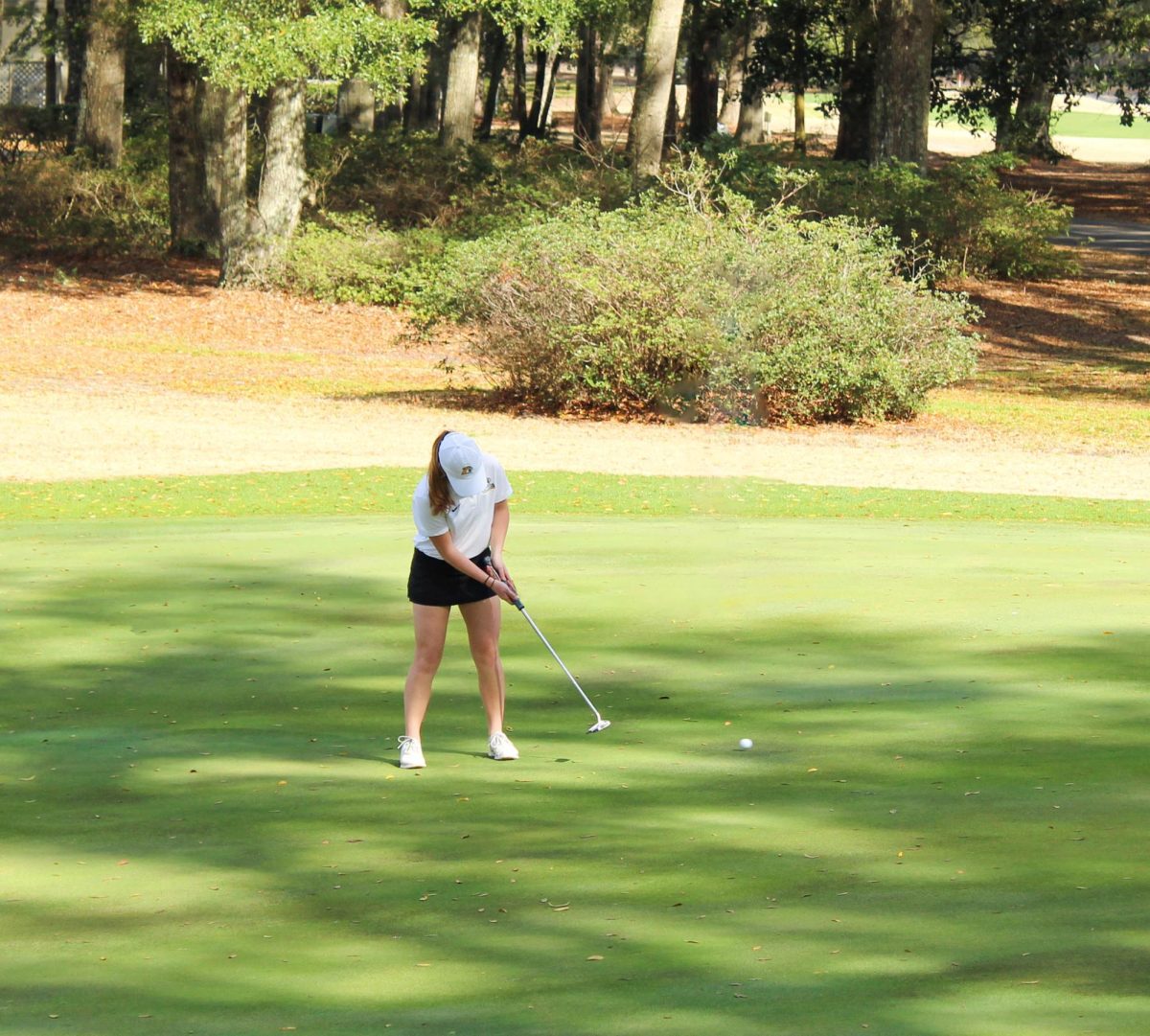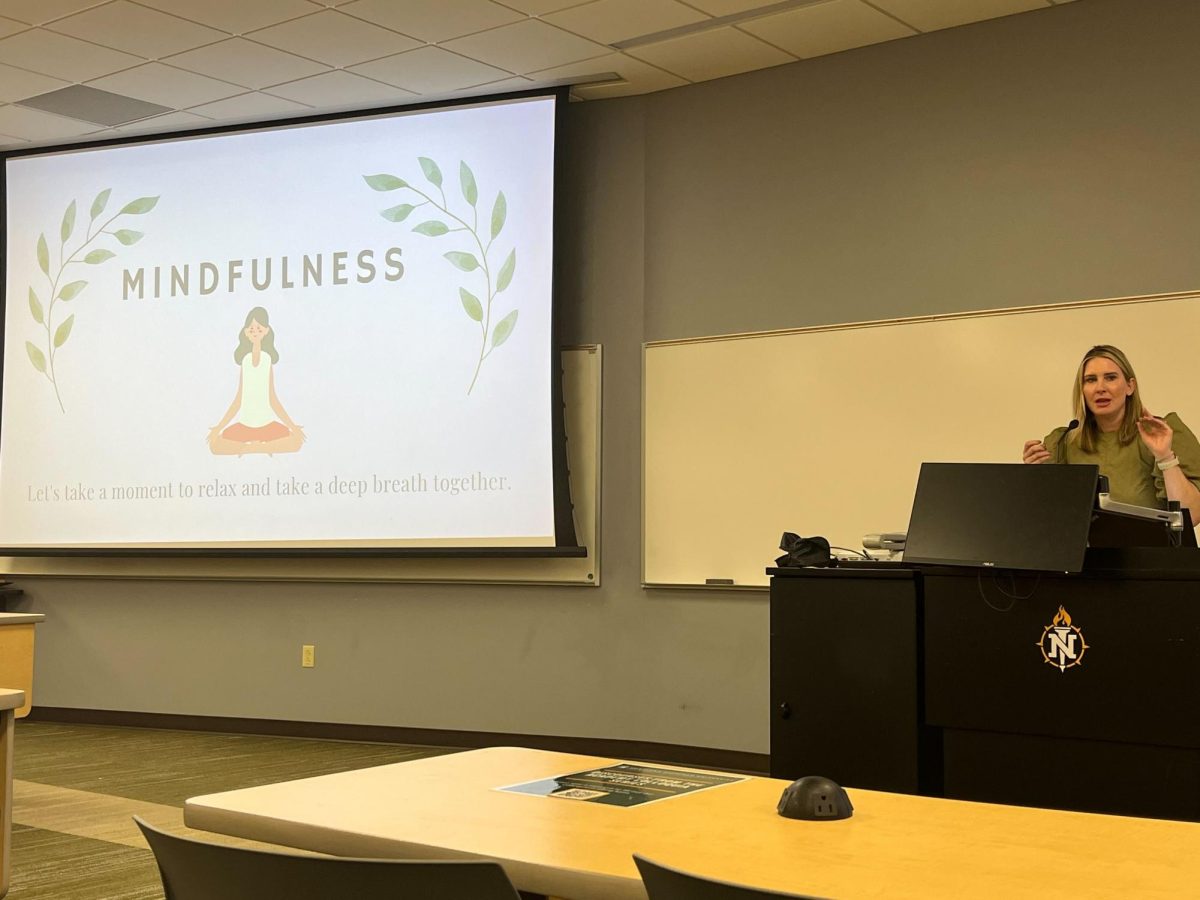On Nov. 1, students, staff and faculty gathered in Jamrich 1322 to listen to Dr. Angie Stebbins, a licensed clinical psychologist and director/department head of the Counseling Center. She introduced mindfulness interventions that can help with burnout.
As the event began, Dr. Stebbins instructed everyone to take a deep breath as a way to ground themselves. Then she asked the audience to think of a random act of kindness they performed.
“Why am I asking about random acts of kindness? To cultivate gratitude. The best thing that we can do, other than taking care of ourselves, is to do that for others,” Dr. Stebbins said. “Then I want you to tell me how you’re feeling. Just think about how you’re feeling. Check in with yourselves. We often don’t do that.”
Dr. Stebbins then introduced the topic of burnout. Burnout is a mental, physical and emotional issue to which many in the room could relate.
“If you have chronic stomach aches that have recently come on and you’re feeling stressed, it could be a sign of burnout. If you feel like no matter what you’re doing in your classes or at your job, it is just not working, that could be a sign of burnout. It takes more effort to study, to go to work, to get up and do our jobs,” Dr. Stebbins said.
So how does one prevent burnout? Dr. Stebbins suggested regular exercise, eating healthy, getting adequate sleep, talking to your friends and speaking to a professional.
“Often, we have this thought that if I talk about what is going on it is going to make me feel things that I don’t want to feel,” Dr. Stebbins said. “It is going to make me feel worse, when, in fact when we talk about things, it actually makes us feel better. Because we can have someone say, ‘Yeah, I am going through the same thing.’”
Dr. Stebbins then discussed mindfulness, which she defined as paying attention with intention to the present moment without judgment, and how it plays an important role when it comes to dealing with burnout.
She began her demonstration by giving an example of a sunny day with clouds in the sky and simply observing the clouds, not putting words to them. Some common negative thoughts could be those about classes and social settings. She explained how if we observe them like clouds, we would be looking at them but not grasping them.
Afterwards, she had the audience close their eyes or find a focal point on the ground, then to focus on anything that itches or tickles. If either of these phenomena occurred, she suggested trying not to react to it, but to instead breathe through it.
This activity led back to being in the present moment, to being mindful. It gave the audience an opportunity to feel the changes within themselves and be okay with them.
Dr. Stebbins then talked about the importance of facing facts in mindfulness. It allows a person to ground themselves against any wandering thoughts that might not be true.
“When we are in our emotions, we take what we think and see and go down a wormhole,” Dr. Stebbins said.
Then she encouraged the audience to stand up and start dancing.
“When we are feeling anxious, depressed, it feels like the whole world is looking at us. But when you really allow yourself to engage in the activity that you’re doing, you stop thinking about everyone else and what their perception of you is,” Dr. Stebbins said.
Dancing showed everyone the importance of getting out of your comfort zone and working against thoughts that may not be true.
“It teaches us emotional regulation, how to tolerate our emotions,” Dr. Stebbins said. “So, it is important to check in with yourself, be aware of how you are feeling.”
To find counseling services and more at NMU, visit the Counseling and Consultation website.











